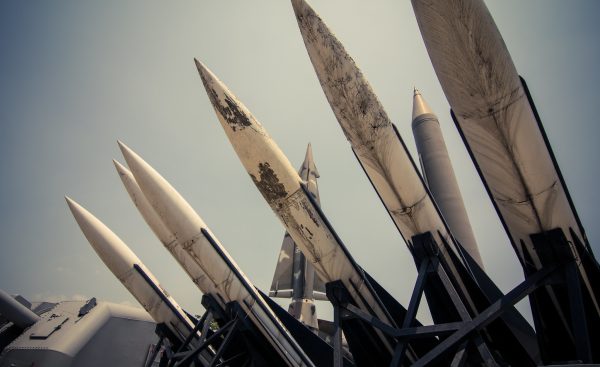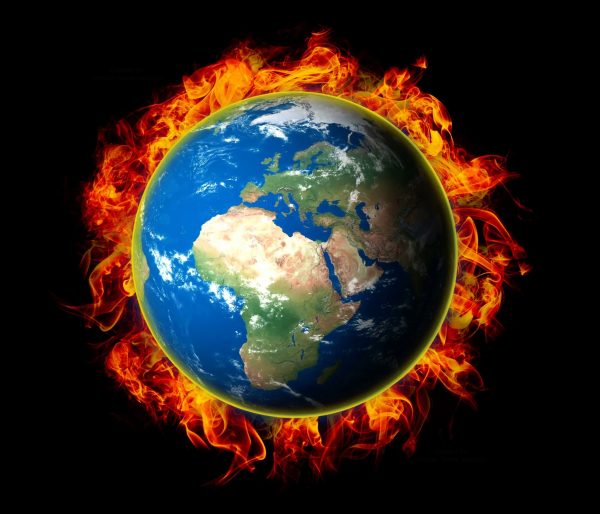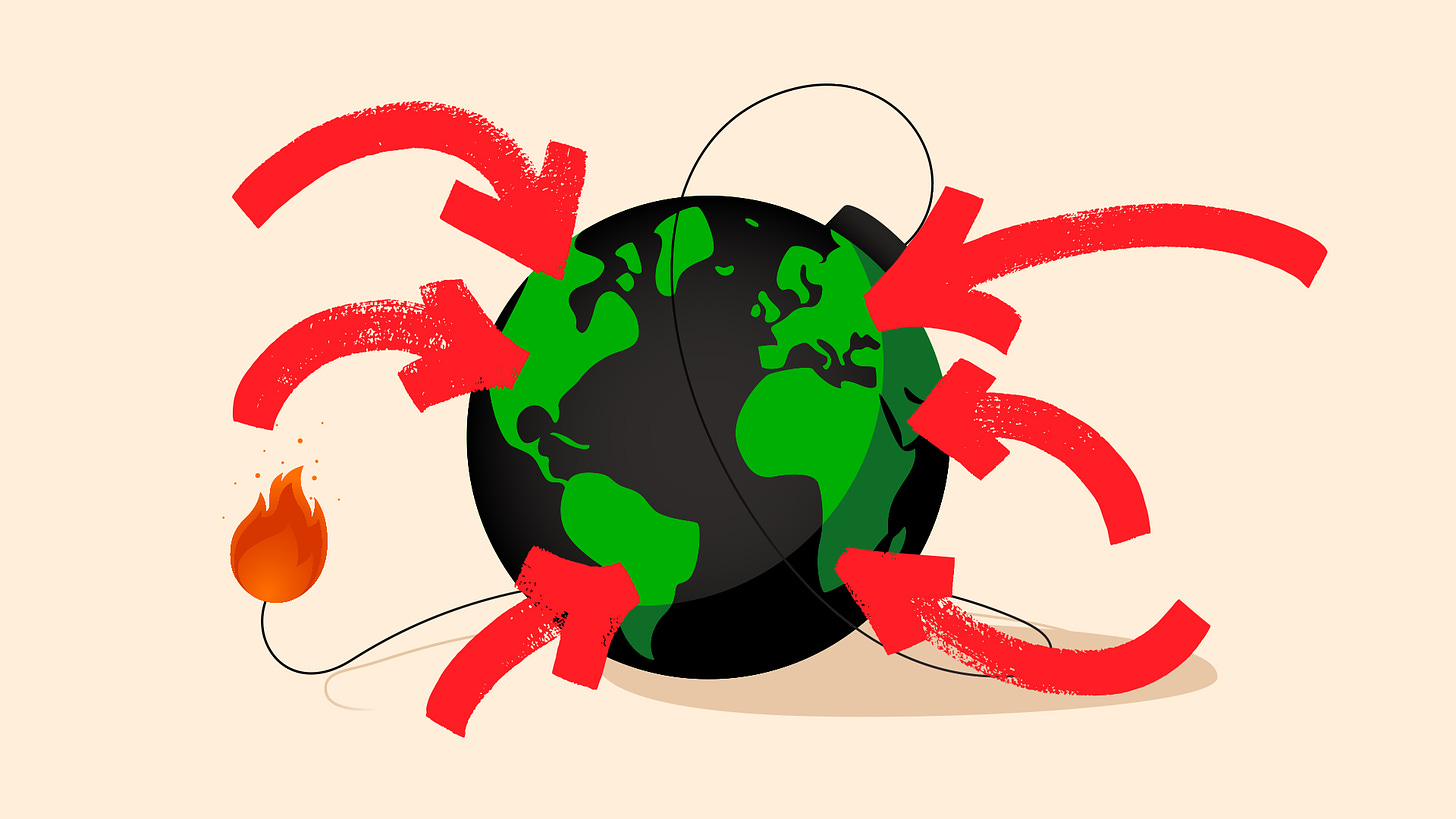What’s ambiguous about Israel’s nuclear policy is not whether the country has these weapons, but how it plans to use them.

On September 22, 1979, U.S. surveillance satellite “Vela 6911” detected a double flash of light in the Indian Ocean midway between Africa and Antarctica that appeared to be consistent with the detonation of a nuclear weapon. As researchers with the Federation of American Scientists (FAS) note in their paper, “Israeli Nuclear Weapons, 2021,” U.S. intelligence at the time of “the Vela incident” believed the double flash to be an Israeli nuclear test, conducted with logistical support from the Apartheid-era South African government. A panel assembled by President Jimmy Carter, however, rejected this conclusion based on a premise that the Administration knew to be false, but did not want to challenge politically—that Israel did not possess nuclear weapons.
Israeli “nuclear ambiguity,” its lack of official confirmation or denial that it possesses nuclear weapons, persists to this day. Nevertheless, as of 2021, researchers estimate that the country possesses ninety nuclear warheads, capable of being delivered by aircraft, land-based ballistic missiles, and sea-based cruise missiles. Israel is reserving these weapons for “the Samson Option”: an all-out assault on the civilian population centers of its opponents.
Researchers have been able to reconstruct the history and current status of Israel’s nuclear program through declassified materials, as well as statements by Israeli politicians and officers themselves.
“Israeli officials do not explicitly discuss the country’s nuclear doctrine, but the country still needs to implicitly signal the circumstances under which it would use nuclear weapons for deterrence purposes,” says Kelsey Davenport, director of nonproliferation policy at the Arms Control Association, which advocates for nuclear disarmament. “Reading between the lines of statements from former and current officials and military planners provides insights into how the country may use its nuclear weapons, such as the Samson Option.”
In 1999, Israeli-American historian Avner Cohen published Israel and the Bomb, which relied on recently declassified documents from archives in Israel and the United States to piece together the process by which the government of Israeli Prime Minister David Ben-Gurion colluded with or deceived U.S. President Dwight D. Eisenhower, French Prime Minister Guy Mollet, and Norwegian Prime Minister Einar Gerhardsen to begin construction of a nuclear reactor in the late 1950s. Ben-Gurion’s government first denied the reactor’s existence, then insisted on its peaceful purposes in scientific research and energy production—all while intending to produce weapons-grade plutonium. Israel may have assembled its first nuclear weapon as early as 1967. It remains the only country in the Middle East with nuclear weapons.
The ambiguity around Israel’s nuclear arsenal also extends to its nuclear doctrine, or the circumstances under which it would choose to deploy nuclear weapons. A previous report from the FAS describes a key component of Israel’s nuclear doctrine as “the Samson Option,” a reference to the biblical figure Samson, who killed himself and his enemies by collapsing the pillars of the temple in which they all stood. The Samson Option similarly invokes murder-suicide, threatening any force that successfully defeats Israel’s conventional military with nuclear retaliation.
“Israel’s policy of never formally acknowledging its nuclear arsenal makes its doctrine ambiguous, but the Samson Option is believed to refer to Israel’s plans for overwhelming nuclear retaliation against non-nuclear adversaries if the country faces an imminent, existential threat,” says Davenport. “It would likely include deliberate, disproportionate nuclear strikes against non-military targets, such as cities, despite the clear violation of international humanitarian law.”
The Samson Option stands in contrast to doctrines embraced by other nuclear powers, such as “Mutually Assured Destruction” (MAD). Developed during the Cold War, MAD posits that nuclear powers like the United States and the Soviet Union could deter each other from ever using nuclear weapons through the threat of retaliatory strikes—that is, if one nuked the other, the other would nuke back, meaning neither would survive. Unlike MAD, Israel’s Samson Option specifically threatens its non-nuclear opponents.
“MAD is designed to deter war or prevent war from escalating to nuclear use,” explains Davenport. “The Samson Option is not designed to deter a nuclear adversary from a first strike or counter strike—Israel is the only nuclear-armed state in the region. Rather, its purported purpose is to ensure Israel’s survival. Under the Samson Option, nuclear weapons would be deliberately used against a non-nuclear adversary as a last resort to prevent an Israeli defeat.”
The events of October 7, as well as the ongoing Israeli genocide in Gaza, reveal the dangers of Israel’s nuclear doctrine. On October 7, conventionally armed Palestinian militants were able to successfully overwhelm defenses at multiple points of the militarized border wall constructed by Israel around Gaza. The Palestinian militants advanced under a barrage of rockets fired from Gaza into Israel—one of which struck an Israeli military base housing nuclear-capable missiles, according to an analysis by The New York Times.
Even after the Israeli military managed to repel the Palestinian militants, at least one Israeli politician called for the use of nuclear weapons against Gaza, as reported by the Associated Press and others. Therefore, the true ambiguity that now remains is not whether Israel possesses nuclear weapons, but how those weapons might be used.
“Israel’s nuclear arsenal does not protect the state against conventional strikes, particularly from non-state actors,” says Davenport. “Furthermore, the irresponsible rhetoric of Israeli politicians threatening to use nuclear weapons against Gaza erodes the taboo against nuclear use and underscores the critical importance of redoubling efforts to reduce nuclear risk and work toward disarmament.”
06.23.2024
Israel’s nuclear program is its worst-kept secret. It was made possible through the support of Western nations like France and has thrived due to a cynical attitude toward nonproliferation that has made the world more dangerous.

An Israeli soldier rides in a tank near the border with Gaza on October 14, 2023, near Sderot, Israel. (Amir Levy / Getty Images)
Israel’s nuclear weapons program has been an open secret for over fifty years. Declassified documents and the wider availability of satellite imagery has largely been responsible for revealing the extent of the nation’s nuclear program. So too has the courage of whistleblowers such as Mordechai Vanunu, an Israeli nuclear technician who exposed his country’s covert program and was subsequently drugged and kidnapped by Mossad agents in Italy before being secretly tried and sentenced to eighteen years in prison in 1986.
Yet the United States and other nuclear-armed states, as well as a broad range of bodies responsible for monitoring arms proliferation, continue to maintain a policy of not publicly acknowledging the existence of Israel’s nuclear weapons.
These norms of institutional secrecy are surprisingly powerful and far-reaching. US government employees have been fired for referring to Israeli nuclear weapons. Even Wikipedia’s page on the subject uses circuitous language to refer to their existence. (The page is locked to edits from almost all contributors.) This approach is effective: a 2021 poll suggested that more Americans believed that Iran has nuclear weapons than that Israel does, when the reality is the opposite.
This wall of silence has proven remarkably porous. During the early days of Israel’s war on Gaza, government officials openly entertained the possibility of using nuclear weapons on the battlefield, and figures within the US military think tank circuit have wondered whether Israel’s secrecy is doing it more harm than good.
Conventional wisdom about the strategic importance of possessing nuclear weapons is that there’s no reason to have one if you don’t tell anyone. Intimidation is as much a part of deterrence as use. If no one suspects you can respond to an attack with the overwhelming force of a nuclear counterattack, what’s to make them think twice?
But Hezbollah’s continued assault on northern Israel, which has thus far led to the evacuation of over ninety thousand people, gives lie to the notion that possession of nuclear weapons offers complete protection. In a recent speech, Hassan Nasrallah, Hezbollah’s secretary general, made it clear that if Israel were to cross what it considers to be red lines, there would be no target within the country safe from a retaliatory response. It is therefore not clear that Israel’s nuclear weapons are on their own preventing it from being attacked in a way that threatens its existence. Israel’s relationship with the United States has, however, afforded it a range of impressive offensive and defensive nonnuclear capabilities, backed up by the even larger looming threat of US military involvement, which it is actively using.
Were the US to enforce its own policies consistently, Israel’s status as a state in possession of nuclear weapons would directly threaten its access to aid. The Glenn Amendment to the US Arms Export Control Act explicitly prohibits arms assistance to and mandates sanctions on countries that have, as Israel did in 1979, tested a nuclear weapon after 1977. But the fact that its nuclear weapons program continues to command this kind of bizarre deference illuminates the forces driving nuclear proliferation around the world.
The Forces Behind Proliferation
Scrupulous nonacknowledgment of Israeli nuclear weapons in the present day is part of the United States’ general position of aiding Israeli military endeavors, regardless of the financial or strategic cost. But the reason Israel has nuclear weapons in the first place has less to do with its relationship with the United States and more to do with the geopolitical forces that have driven proliferation since America first dropped the bomb on Japan.
The program that produced Israel’s nuclear weapons is as old as the state itself. As Avner Cohen details in Israel and the Bomb, a nuclear program was discussed by Israel’s leaders practically from the establishment of the Israeli state in 1948. David Ben-Gurion, the country’s first prime minister, took an intense personal interest in nuclear technologies in particular and science and technology as foundations of modern state power in general.Hezbollah’s continued assault on northern Israel gives lie to the notion that possession of nuclear weapons offers complete protection.
Already in 1949, Israel was conducting exploratory research for potential uranium deposits in the Negev, a desert region in the country’s south. When these proved inadequate, it developed techniques for producing usable nuclear material from the relatively poor resources at its disposal, before turning to the United States as the potential source of the raw materials necessary to jump-start a nuclear program.
But in the immediate postwar years, the United States was unwilling to provide the necessary material without guarantees from Israel that the country’s leaders saw as undesirably inhibiting. Israel instead turned to other small countries with nuclear programs at different stages of development: France and Norway, two of only three European countries in the early 1950s operating nuclear reactors.
Israel and France shared a set of geopolitical interests. Both opposed the government of Egyptian president Gamal Abdel Nasser. The French, motivated by neocolonial idealism, took issue with Nasser for nationalizing the Suez Canal, and Israel of course felt threatened by Nasser’s Arab nationalism.
Skepticism about the possibility that the US nuclear umbrella could actually offer security guarantees also motivated nations like France to advance a Gaullist policy of strategic autonomy. This meant encouraging nuclear proliferation where doing so would secure the broader geopolitical interests of declining powers.
Nonproliferation Amid Great-Power Rivalry
In the present, the United States actively works to shield the Israeli nuclear weapons program from criticism as well as public knowledge. As with France’s hostility to a Nasser-led anti-Western order, the Israeli-US alliance is strongly motivated by fear of Iran, or any other anti-American state, developing its own nuclear program. Yet Israel’s nuclear weapons, along with the substantial, long-term support among a certain segment of the US political class for war with Iran, are two very powerful factors driving Iran to develop its own nuclear weapon.
At present, Iran does not have nuclear weapons, though experts believe that it currently maintains the capability to quickly develop them. President Barack Obama’s 2015 Iran nuclear deal limited Iran’s ability to develop a nuclear weapon and imposed a regime of inspections and oversight which provided assurance to other countries that it was not developing nuclear weapons. But Israel opposed the deal on the grounds that it did not go far enough to preclude the possibility that Iran might one day develop a nuclear weapon — a similar kind of all-or-nothing approach to the one that informed the Donald Trump administration’s decision to exit the agreement in 2018.
As Israel’s war on Gaza continues and expands outward into the broader region, it seems it may only be a matter of time before Iran finally does develop a nuclear weapon. After its recent large-scale rocket attacks against Israel, Iran announced that it might reverse its current voluntary commitment to not developing nuclear weapons should Israel retaliate by hitting its nuclear facilities. It goes without saying that this would make the ongoing conflict between Israel and Iran much more dangerous, giving even low-level incidents the potential to escalate to dramatic and destructive new heights.The United States actively works to shield the Israeli nuclear weapons program from criticism as well as public knowledge.
In effect, unwillingness to commit to nuclear nonproliferation has led to nuclear proliferation. This explains why Saudi Arabia has in recent years betrayed nuclear ambitions. Crown Prince Mohammed bin Salman has stated in US press outlets that Saudi Arabia would develop a nuclear weapon if Iran did so. Yet rather than treating this open disregard for stated US policy as a serious limit on US-Saudi relations, the United States has been pushing for a so-called “normalization” deal between Saudi Arabia and Israel — including a stipulation of a “credible path to a Palestinian state.” Saudi Arabia, in turn, wants the United States to provide it with nuclear technology — ostensibly, of course, for a power program.
The dilemma for America is that whatever interest it does have in nuclear nonproliferation must be balanced against its broader commitment to global hegemony. The latter would be undermined if China, which it now sees as its key competitor, stepped in to provide technical support to fledgling nuclear programs, as it has done with Saudi Arabia. Last year, China sent one of its engineering companies to conduct surveys of the Gulf monarchy’s uranium deposits, although it seems unlikely that these deposits could support a nuclear program of any size.
Nuclear weapons experts have called for safeguards that could prevent the development of a Saudi nuclear weapons program. Yet unlike in the case of Israel’s search for nuclear material, the threat of safeguards doesn’t seem to be a deterrent to the kingdom’s openly stated nuclear ambitions. It sometimes seems that U.S. nuclear weapons policy in 2024 is based on a tacit acceptance of its powerlessness over global nuclear weapons politics. Rather than trying to prevent proliferation, America has been forced to settle for the role of being the primary nuclear patron where it can.
Existential Threats
Israel’s possession of nuclear weapons has been largely irrelevant to the ongoing war in Gaza. The country’s overwhelming conventional capabilities have granted it superiority on the battlefield, at the cost of the lives of tens of thousands of civilians. But possession of nuclear weapons reinforces the worldview that underlies Israel’s political calculations (and to some extent, those of every nuclear-armed country): that its existence is constantly threatened, and it is only rational for it to possess the means of responding to such threats with unlimited force.
It is the states with the most nuclear weapons, Russia and the United States, that most assiduously cling to the logic that weapons of mass destruction are the only safeguard against existential threats. Both have consistently bypassed opportunities to deescalate the very real, immediate risks to human safety and civilization that the continued existence of nuclear weapons poses. In doing so, they’ve set a powerful precedent for every other country in the world to uphold nuclear weapons as the only real guarantor of security.
Without a real commitment to reducing the role of nuclear weapons in global politics by the states that can certainly afford it, this de facto policy encourages nuclear proliferation. Israel’s well-defended status as a nuclear power that need not even announce itself is not an exception, but an example to other states thinking of going nuclear.
CONTRIBUTOR
Emma Claire Foley is a writer and filmmaker based in New York. Her writing and commentary has appeared in Newsweek, NBC, the Guardian, and elsewhere.




